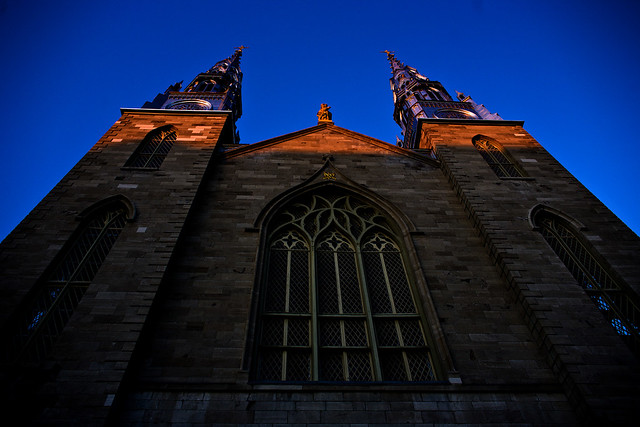
This summer Chamberfest once again highlighted churches as fantastic downtown arts venues.
Re-imagining or re-purposing “the church” is happening a lot more these days.
The Sunday Event
With fewer parishioners spending Sundays at churches, especially in downtown areas, beautiful old church buildings are being forced to diversify or dissolve.
There is a migration of well-established congregations purchasing cheaper property in the suburbs and following families out of the city, such as the Metropolitan Bible Church formerly on Bank and Gladstone Street (shortly to be a new condo block).
Churches are expensive. They rely on funds from Sunday collections and fundraisers to support their operations. Downtown property taxes and older buildings are a strain and increasingly challenging to maintain.
While some are selling off their parking lots to make ends meet, other parishes are finding new uses for their spaces and attracting new audiences, beyond Sunday’s main event.
New Audience
One such example is St. Brigid’s Centre for the Arts & Humanities in the Market on St. Patrick. Purchased by a caring group who didn’t want to loose the heritage site, the church has taken on a new life as an arts venue and cultural centre. Now venue to Chamberfest and the International Writer’s Festival, it also acts as a touchstone for the Irish community of Ottawa. The grand hall acts as a performance venue and there is a large gallery/reception space in the basement.
Churches are great because they:
1. Accommodate large audiences
2. Have great acoustics; being built for the human voice to carry and for people to listen
3. Are built with accessory rooms for other functions
One big drawback is sitting on uncomfortably hard pews. Some visitors may also be uncomfortable being surrounded by crosses and religious imagery, which unfortunately comes with church heritage preservation.
Nonetheless, the surroundings can make for an stimulating environment to host events and community services.
St. John the Evangelist Church on Elgin, as another example, hosts music performances, art shows, salsa dancing on Friday nights, social programs like The Well and even has a charity shop in the basement.
Seeing is believing
These activities are bringing new people into church spaces, while so many other churches lay vacant and lifeless the rest of the week.
As a venue, people are exposed to time capsules of local history and examples of great Canadian architecture, mural painting, woodwork and more.
Dynamic non-faith-based programming helps preserve the community space, engage the general public (who may feel churches to be “not for them”) and generate much-needed revenue for maintenance, thus keeping the elegant steeples on our downtown skyline for the generations to come.
photo by Owen Byrne

3 comments
Quote: Some visitors may also be uncomfortable being surrounded by crosses and religious imagery, which unfortunately comes with church heritage preservation.
Huh? Let’s preserve the church but remove all imagery that made the church a church? The church throughout history has been more than a religious institution. It has housed Scout groups, youth groups, feed the homeless, been used for public meetings… Any preservation attempt should highlight that history, religious and civic.
“Downtown property taxes and older buildings are a strain and increasingly challenging to maintain.”
I don’t think Toronto churches (or any religious institutions) pay property taxes though. Please correct me if I’m wrong though.
I just wanted to make one quick correction: Saint Brigid’s Centre was the venue for the Writers Festival in 2009, but this spring the Festival moved to the Mayfair Theatre in Old Ottawa South. The upcoming Fall Edition in October, and upcoming Festivals for the foreseeable future, will be held at the Mayfair as well.